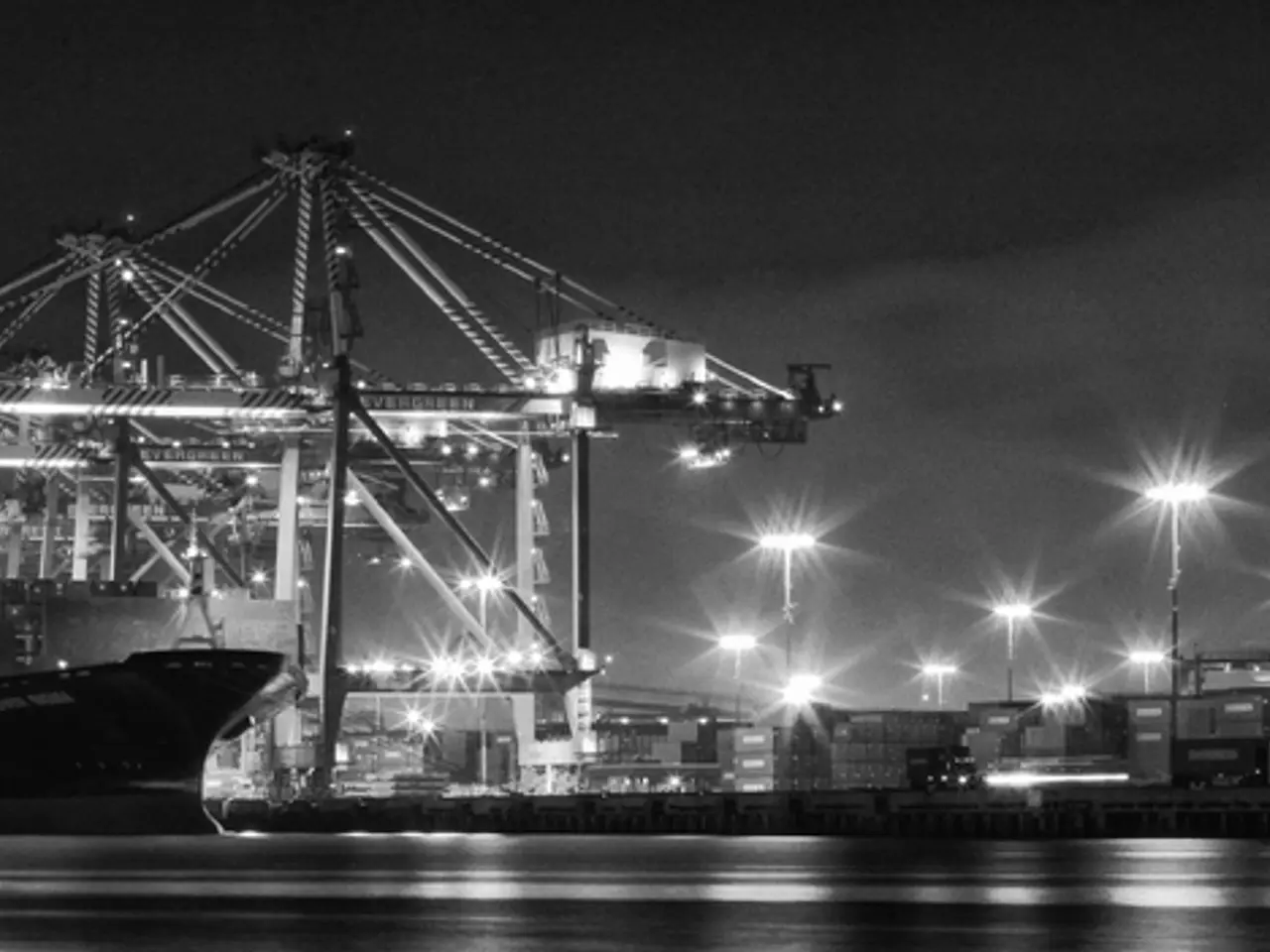Walmart and Trump's Tiffs Over Tariffs
A Clash of Economic Philosophies
Trump Proposes to Focus Business Attention on Walmart
In the ongoing debate over trade policies, US President Donald Trump has picked a fight with retail titan Walmart. The president has criticized the company for using tariffs on Chinese goods as a pretext for increasing prices. Trump, in a sassy post on his Truth Social platform, argued that Walmart had made billions last year and thus should not rely on tariffs to justify price hikes. Instead, he urges both Walmart and China to "eat the tariffs."
The modest man, known for his flair for the dramatic, added a warning: "I'll be watching - and so will your customers!!!"
This public feud may have been sparked by Walmart CFO John David Rainey's comments about the government's tariff policy. On CNBC, Rainey voiced his satisfaction with the government's progress on tariffs but criticized their current levels as unsustainably high. He revealed that while Walmart will absorb some of the price increases and so will suppliers, the consumers will still feel the sting. By May at the latest, shoppers will notice price increases on products across the store shelves.
Pretty much everything you'd find in a typical Walmart, from electronics to clothes, has a Chinese link – directly or indirectly. Increased tariffs on Chinese imports translate into pressure along the supply chain, which is bad news for political figures like Trump, who rely on the price-sensitivity of his base.
A Hidden Threat
Trump's love-hate relationship with US retailers has put them in a precarious position. If they raise their prices, they risk a battle with Trump and his price-conscious fans. On the other hand, offloading the burden onto suppliers isn't ideal either.
Insiders report that Walmart and other US retailers have demanded price cuts from some Chinese suppliers, and some have even been asked to relocate production outside of China. There's also a hidden threat looming: demanding price cuts from suppliers might break contracts and disrupt market order. Legal consequences were hinted at, sources said.
If Walmart pushes Chinese suppliers to swallow the price increase, they just may find themselves swallowing something more than tariffs, according to Chinese state TV channel CCTV on social media.
A Quick Look at the Numbers
- Tariff Reduction: The US has reduced tariffs on Chinese goods from 145% to 30% for a 90-day period. However, this reduction doesn't eliminate the cost pressure for Walmart.
- Walmart's Stance: Walmart CEO Doug McMillon admits that the company will do its best to keep prices down but cannot absorb all the tariff pressure due to narrow retail margins.
- Trump's Response: Trump believes that Walmart should absorb the cost of tariffs rather than passing them onto consumers. He argues that this aligns with his economic plan to promote domestic manufacturing jobs.
- Consumer Concerns: Walmart has indicated that price hikes are inevitable due to the tariffs, which could affect a wide range of products, including some essential items.
- Economic Impact: The ongoing trade tension and tariffs have raised concerns among retailers about potential product shortages, price spikes, and even store closures if the situation worsens.
- The ongoing debate over tariffs in business and politics, as seen in the clash between US President Donald Trump and Walmart, could have significant impacts on both the community policy (how the government addresses local issues) and employment policy (regulations affecting workforce) due to potential product shortages and price spikes.
- In the wake of tariffs on Chinese goods and the subsequent price increases in retail, although companies like Walmart may be striking dealing with Chinese suppliers to reduce costs, they might face legal consequences or disruptions to market order if they demand excessive price cuts, as suggested by Chinese state TV channel CCTV on social media. Furthermore, the financial implications of these tactics could affect not just the companies but also the general-news (overall economic and political landscape).




